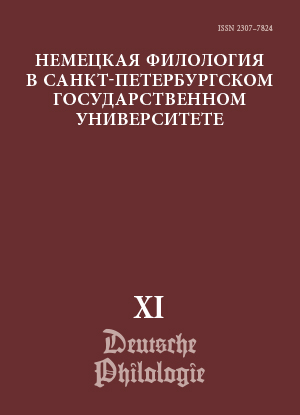The compatibility of the deontic indicator with a communicative verb in 1st-person modal constructions: semantics and pragmatics (based on Russian and German languages)
Abstract
The paper explores the functional characteristics of deontic constructions with communicative verbs in two different-structured languages, in Russian and German. The material for statistical and contextual analysis was retrieved from the National Corpus of the Russian language. The research uses the method of semantic analysis and quantitative method. First person modal constructions (1st person Singular and Plural) with communicative verbs are modalized performatives, they are language universal. Their pragmatic characteristics are revealed: designation of the communicative significance of the subsequent proposition and labeling of categoricality. The study shows that that mandatory components — communicative verbs and deontic markers, — as well as optional components, independently and in interaction, are involved in modifying the categoricity of the deontic construction. Quantitative data of deontic constructions with different filling based on National Corpuses are presented. The inner syntactics of deontic constructions is empirically determined. Considering the distribution of deontic constructions, nuclear constructions are identified, they are different in communicative-intentional content: with the verbs skazat’ — sagen, priznat’ — gestehen. The study shows that the syntagmatics of construction is affected by the type of modal subject — I or We. The frequent speech preferences in the filling of the deontic structure, determined by semantic and pragmatic factors, are established. The analysis found that deontic markers of the Russian language make enables expressing more accurately nuance modal-pragmatic meanings.
Keywords:
deontic construction, communicative verb, speech verb, deontic marker, deontic predicate, pragmatic characteristic, categoricality, communicative relevance, compatibility
Downloads
References
References
Downloads
Published
How to Cite
Issue
Section
License
Условия передачи авторских прав на статьи и рецензии, опубликованные в ежегодном периодическом издании «Немецкая филология» регулируются условиями Лицензионного Договора автора с Санкт-Петербургским государственным университетом. В соответствии с Лицензионным Договором опубликованные материалы находятся в открытом доступе, а авторам бесплатно предоставляется неограниченные возможности их распространения и самостоятельного архивирования.




